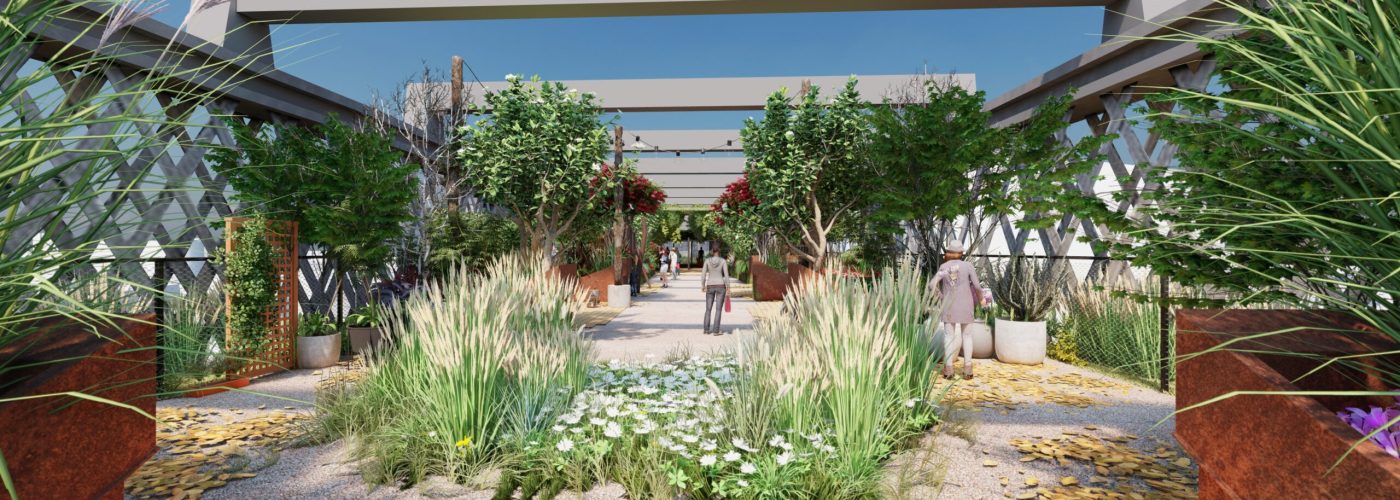A new urban sky park created on a disused railway viaduct in Manchester has been unveiled and will open to public visitors from Saturday, July 30.
Castlefield Viaduct, a giant 330 metres long steel structure, has been transformed over the past five months into an elevated park with trees, plants and flowers in a National Trust project overseen by Salford-based MC Construction.
Thousands of plants, shrubs and trees have been planted to ‘green’ the historic landmark.
The park’s 3,000-plus plants and its design features take their inspiration from Manchester’s heritage, including the county flower, cotton grass and fern species once collected by Manchester suffragist and botanist Lydia Becker.
It will be open for 12 months, during which time visitors will be able to explore part of the structure and find out more about the viaduct’s heritage, the city’s long relationship with plants and trees, and learn urban gardening tips.
The National Trust hopes to inspire and capture visitor and community opinions to help shape the longer-term future of the Grade II listed structure.
Russ Forshaw, Group Operations Director at MC Construction, said: “It has been a great pleasure partnering with National Trust and the key stakeholders involved in the project.
“Regenerating the disused Grade II listed Viaduct that has stood above the historic area of Castlefield for over 125 years has been no easy task. I am thrilled with the end result and I am incredibly proud of the team who have worked tirelessly over the past couple of months to bring National Trust’s vision to life.”
Unveiling the park today, Hilary McGrady, Director-General of the National Trust, said: “Today is incredibly exciting. The idea of transforming the viaduct has been around for a while, but it was always put in the ‘too hard to achieve’ box and set aside.
“For that long-held vision to finally come to life is therefore testament to the strong partnerships we have formed and the hard work of many.
“What I love about this space is that it encapsulates so much of what the Trust’s work is about: opening up our shared heritage for everyone to enjoy, creating beautiful spaces and bringing people close to nature. It’s about creating something new for the community, while also protecting an ironic piece of industrial history.
“We hope hundreds of people will visit and enjoy spending time in nature among the trees, shrubs and wildlife that is already starting to make this space its home. We’ll also be able to learn from this project and really start to understand more about what and how we can bring more green spaces and wildlife to thousands more people across the country in urban spaces.”
Visitors will experience a variety of planting displays as they walk along the viaduct, while enjoying the elevated setting above the historic cobbled streets.
The plans for Castlefield Viaduct are part of the National Trust’s Urban Places work to increase access for all to nature, history and beauty in, around and near urban areas.
In addition to creating a place where people and nature meet, the new experience will also celebrate the industrial heritage of Castlefield which has been reflected through all elements of the design.
The design of the planters gives a subtle nod to the industrial architecture of the 330 metres long viaduct which was built in 1892 by Heenan and Froude, the engineers who worked on Blackpool Tower. The shape of the planters mirrors the curve of the viaduct and their width is the same as the railway tracks that once transported goods across the structure to the Great Northern Warehouse.
A section of the viaduct has also been left untouched to provide a sense of how nature has reclaimed the space since the site closed in the late 1960s.
Costing £1.8 million, the pilot has been made possible thanks to funding from Postcode Earth Trust supported by players of People’s Postcode Lottery, as well as public donations which will cover two-thirds of the build costs.
One hundred people a day will be able to visit the viaduct from next Saturday. Entry on to the structure will be free, but a booking system will be in place to help manage numbers. As part of the experience, visitors will be able to join guided walks on the viaduct.







